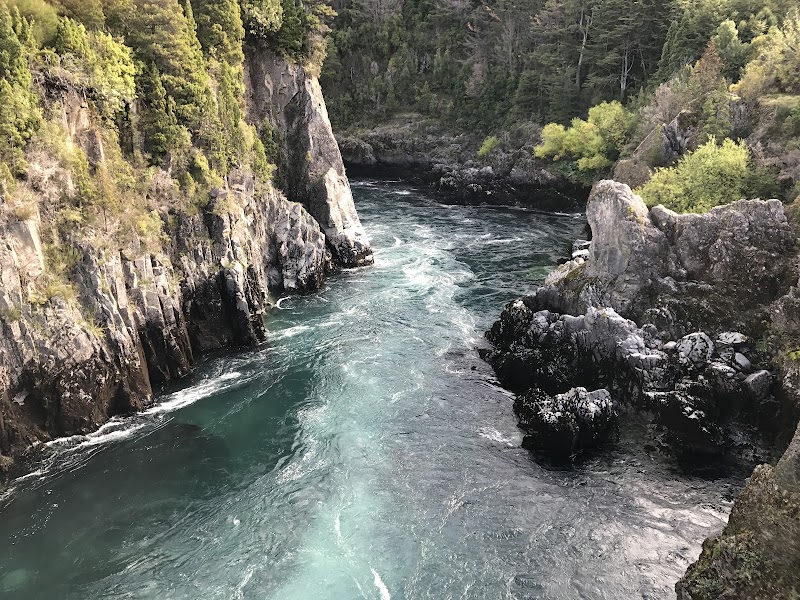
Experience the Patagonia Trail Running Race around Esquel, where the wild Andean foothills challenge your endurance and invite connection with Patagonia’s fierce nature. This practical guide helps you prepare for the 42K course, highlighting terrain details, race tips, and the best seasons to run.
Hydration Strategy
Carry at least 1.5 liters of water; use hydration packs and plan refills at aid stations spaced throughout the course to avoid dehydration amidst dry winds.
Footwear Matters
Choose trail running shoes with solid grip and ankle support to manage both rocky ascents and soft forest trails safely.
Weather Layering
Bring lightweight, breathable layers plus a windbreaker to adapt quickly to Patagonia’s unpredictable mountain climate.
Pacing on Elevation
Start conservatively on early flat sections to conserve energy for the steep climbs, preserving stamina through the race’s toughest segments.
Patagonia Trail Running Race: Navigating Esquel’s Wild Heart
The Patagonia Trail Running Race in Esquel, Chubut, offers an invigorating test of endurance and connection with fierce Patagonian nature. This race stretches roughly 42 kilometers, with an elevation gain of about 1,200 meters, winding through forested slopes, open meadows, and rocky passes that demand focus and steady footing. The trail runs beneath larch and lenga, their branches swaying to a brisk mountain wind that dares runners to push forward.
Starting near Esquel, the course carves through the Andean foothills, where rivers rush with determination, weaving in and out of the trail as if keen to join the race. Terrain shifts rapidly—from soft earth and pine needles to loose stones and steep ascents—requiring runners to balance speed with care. Sweeping views open atop ridgelines, revealing distant peaks dusted with snow, while wildlife such as the elusive Andean fox or soaring condors linger nearby, reminding participants of the landscape’s untamed spirit.
Though thrilling, the race demands preparation. Hydration is critical; frequent refilling points are scattered but not abundant, so carry enough water and electrolytes. Footwear should offer strong grip and ankle support, given how often the trail snakes through uneven ground and slippery patches. Timing your run between late summer and early fall (February to April) maximizes favorable weather—cooler temperatures and stable skies—while avoiding the unpredictable storms of early spring or harsh winter chills.
The Patagonia Trail Running Race balances adventure and endurance in a way that invites casual trail runners to challenge themselves, and seasoned athletes to engage deeply with the environment. Key trail tips include pacing strategy—start steady on the gentle early stretches to reserve energy for the sharp climbs—and layering your clothing to respond quickly to rapid weather changes. The race is not about conquering the land but listening to its rhythm, respecting its fierce forces, and moving in dialogue with the wild.
For those planning to participate or spectate, arriving in Esquel a day early is wise. The town provides a practical base with access to gear shops, medical facilities, and local guides familiar with the terrain’s nuances. Whether you cross the finish line with breath to spare or spent from the relentless challenge, the Patagonia Trail Running Race rewards every step with a sense of achievement grounded in the raw beauty of Patagonian wilderness.
Nearby Trips
All Adventures
Boat Charters
Water Activities
Adventures near Esquel, Chubut
Discover the unique and memorable adventures that make Esquel, Chubut special.
Frequently Asked Questions
What makes the Patagonia Trail Running Race unique compared to other races?
It combines technical mountain terrain with variable Patagonian weather, demanding both physical endurance and adaptive gear choices. The race’s route is deeply connected to native forest and wildlife, making it a dynamic challenge shaped by nature.
Are there aid stations along the race route?
Yes, but they are spaced several kilometers apart. Runners should plan hydration carefully and bring supplemental water to cover longer stretches.
Is previous trail running experience necessary to participate?
While beginners may join, moderate to advanced trail experience helps manage steep ascents and rocky paths safely. Familiarity with elevation changes is strongly advised.
What wildlife might I encounter during the race?
Look for Andean foxes, various bird species including condors, and native small mammals. The fauna often watch quietly, embodying the landscape’s watchful spirit.
How accessible is Esquel for race participants?
Esquel is the primary hub, offering lodging, gear shops, and medical services. Its proximity to the race grounds makes it the best base for acclimatization and preparation.
Are there any environmental considerations runners should observe?
Respect local flora and fauna by staying on marked trails, minimizing waste, and avoiding disturbance to wildlife habitats. The area has fragile ecosystems sensitive to overuse.
Recommended Gear
Trail running shoes
Provides traction on rocky and forested sections, as well as ankle support for variable terrain.
Hydration pack
Allows you to carry sufficient water and electrolytes essential for staying hydrated in dry, windy conditions.
Windbreaker jacket
Protects against the sudden gusts and changing weather common in Patagonia’s mountain environment.
Technical running socks
Designed to manage moisture and prevent blisters during long races on uneven trails.
Local Insights
Hidden Gems
- "Mirador Bandurrias—a lesser-known viewpoint offering expansive valley panoramas near the race trail."
- "Bayo Lagoon—quiet waters home to native birds and perfect for a post-race cool-down."
Wildlife
- "Andean fox"
- "Southern caracara"
- "Crested duck"
- "Huemul deer (rare, elusive)"
History
"Esquel’s region was historically inhabited by the Tehuelche people whose respect for the wild underpins much of the cultural appreciation for this land today."
